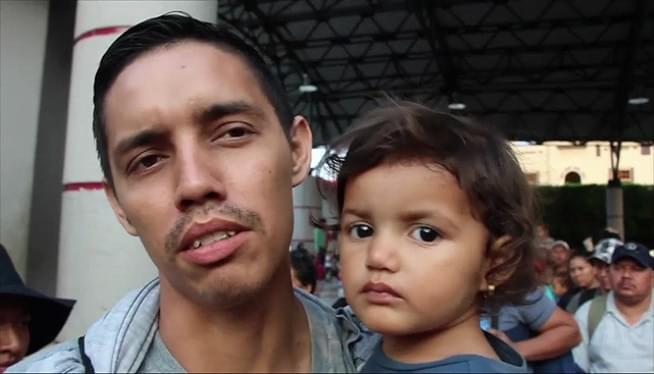MEXICO — It’s part activist march, part humanitarian mission. Throngs of Central American migrants are crossing Mexico during Holy Week as they make their way north to the US border.
It’s become an annual tradition, and getting publicity has always been a goal for this and other so-called “caravans” that periodically make their way through Mexico. This year’s journey is getting even more attention than usual after a series of tweets on Sunday and Monday from US President Donald Trump.
Trump’s tweets place the caravan at the center of the US immigration debate, suggesting that the latest waves of people are coming to the United States because of lax laws that don’t do enough to crack down on illegal immigration.
But immigrants in the caravan have said their reasons for heading north have more to do with conditions in their home countries than with any US immigration policies.
Here’s a look at the caravan and the issues at play:
Guided by an organization known as “Pueblo Sin Fronteras,” or People Without Borders, the annual journey is made up of migrants who say they plan to seek asylum in the United States.
This year marks the fifth Pueblo Sin Fronteras caravan. The migrants began crossing into Mexico last Sunday. This year’s group is the largest yet, numbering more than 1,000 people, according to organizers. A large number are from Honduras, where organized crime fuels widespread violence and protesters recently took to the streets after a contested election.
In recent interviews with CNN en Español, migrants in the caravan said violence, poverty and political unrest in their home countries forced them to make the journey. Alex Mensing of Pueblo Sin Fronteras told CNN that the migrants plan to turn themselves in and request asylum once they make it to the US border.
This is a common practice for Central Americans coming to the United States, who often present themselves at ports of entry and then are taken into custody. Those who make it to the United States rarely succeed in winning asylum. But their cases can take years to make their way through the backlogged system.
What happens to immigrants after they’re taken into custody at the border is a matter of longstanding debate. The Trump administration has slammed the practice of what it calls “catch and release,” arguing that loopholes require officials to release many families and unaccompanied minors from custody while their cases make their way through the system. The administration says this encourages more illegal immigration.Immigrants rights organizations have argued it’s unnecessary and immoral to detain families seeking asylum.
“Fox & Friends” reports on the caravan Sunday morning described the group as a “small army of migrants marching toward the United States.”
The network featured an interview with National Border Patrol Council President Brandon Judd, who accused Mexican officials of helping the migrants get to the US border and called for activists helping the migrants to face prosecution in the United States.
Trump’s first tweet about the caravan came later Sunday morning. Mexico’s foreign minister swiftly fired back with tweets in English and Spanish.
“Every day Mexico and the US work together on migration throughout the region,” Foreign Minister Luis Videgaray Caso wrote. “Facts clearly reflect this. An inaccurate news report should not serve to question this strong cooperation.” Mexico’s relationship to Central American immigrants is complicated.
Historically, on the often-dangerous journey through Mexico, migrants from Central America have fallen prey to cartel violence and faced harsh criticism from locals.
Last year, a growing number of migrants from Central America said they were seeking refuge in Mexico as word of toughening US immigration policies spread. About 1,300 Central Americans obtained permanent residency as refugees last year, according to Mexican government statistics.
But when she visited Mexico’s southern border earlier this year, CNN’s Leyla Santiago found that Trump’s tough talk on immigration wasn’t scaring people away from journeying to the United States the way it once did. Mexico deported more than 76,000 Central Americans last year, according to government statistics. The majority — more than 35,000 — were returned to Guatemala.
The-CNN-Wire™ & © 2018 Cable News Network, Inc., a Time Warner Company. All rights reserved. (Photo: CNN)





















